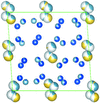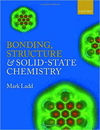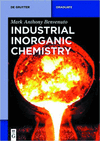issue contents
December 2016 issue

Cover illustration: From top left to bottom right: images taken and adapted from Welch et al. [(2016), Acta Cryst. B72, 822-827], Daszkiewicz & Mielcarek [(2016), Acta Cryst. B72, 916-926], Brock [(2016), Acta Cryst. B72, 807-821] and Mugnaioli et al. [(2016), Acta Cryst. B72, 893-903].
scientific commentaries
Free 

Detailed analysis by Brock [Acta Cryst. (2016), B72, 807–821] of the details of the crystal packing and chemical functionality in 284 organic crystal structures with Z′ > 4 reveals organizing principles in the vast majority of cases.
research papers
An in-depth investigation of the Z′ > 4 structures of organic molecules archived in the Cambridge Structural Database has shown that the group is very diverse but that most structures are the result of a simple modulation and/or of a hydrogen-bonded aggregate that has at most approximate symmetry.
Download citation


Download citation


The superstructure of a novel high-pressure hydrous silicate K1.5Mg2Si2O7H0.5 relevant to the water budget of the Earth's mantle has been determined and its crystal chemistry discussed in relation to its stabilization at mantle conditions.
B-IncStrDB reference: 12392EA3Waa
CCDC reference: 1502345
Download citation


Download citation


The potential of pyrimidin-2-amine as a building block to construct extended supramolecular structures has been evaluated in comparison to the well established bridging ligands pyrazine and 1,2-bis(4-pyridyl)ethane on the 4,4,4-trifluoro-1-phenylbutane-1,3-dionato copper(II) and zinc(II) moieties.
Download citation


Download citation


Mefenamic acid and tolfenamic acid form solvates with selected substituted pyridines. The crystal structures, thermal stability, desolvation studies and other modes of preparation were also determined.
Download citation


Download citation


Two cubic phases in a kimzeyite crystal create optical anisotropy that results from strain originating from structural mismatch. Two different mechanisms, namely epitaxial growth and exsolution on cooling, give rise to the two phases.
Download citation


Download citation


The hydrogen-bonded ferroelectric material rubidium hydrogen sulfate has been investigated through a combination of high-pressure X-ray diffraction and neutron Laue diffraction. This study confirms the order–disorder origin of the ferroelectric transition as well as fully characterizing the high-pressure phase transition.
Download citation


Download citation


Open  access
access
 access
accessThis article describes an important improvement in the CrystalPredictor II code: adaptive Local Approximate Models (LAMs). This improvement allows the most efficient use of computational effort to cover a flexible molecule's conformational space, and is illustrated with a crystal structure prediction (CSP) investigation into the sixth blind test molecule 26.
CCDC references: 1506361; 1506362; 1506363; 1506364; 1506365; 1506366; 1506367; 1506368; 1506369; 1506370; 1506371; 1506372; 1506373; 1506374; 1506375; 1506376; 1506377; 1506378; 1506379; 1506380; 1506381; 1506382; 1506383; 1506384; 1506385; 1506386; 1506387; 1506388; 1506389; 1506390; 1506391; 1506392; 1506393; 1506394; 1506395; 1506396; 1506397; 1506398; 1506399; 1506400; 1506401; 1506402; 1506403; 1506404; 1506405; 1506406; 1506407; 1506408; 1506409; 1506410; 1506411; 1506412; 1506413; 1506414; 1506415; 1506416; 1506417; 1506418; 1506419; 1506420; 1506421; 1506422; 1506423; 1506424; 1506425; 1506426; 1506427; 1506428; 1506429; 1506430; 1506431; 1506432; 1506433; 1506434; 1506435; 1506436; 1506437; 1506438; 1506439; 1506440; 1506441; 1506442; 1506443; 1506444; 1506445; 1506446; 1506447; 1506448; 1506449; 1506450; 1506451; 1506452; 1506453; 1506454; 1506455; 1506456; 1506457; 1506458; 1506459; 1506460; 1506461; 1506462; 1506463; 1506464; 1506465; 1506466; 1506467; 1506468; 1506469; 1506470; 1506471; 1506472; 1506473; 1506474; 1506475; 1506476; 1506477; 1506478; 1506479; 1506480; 1506481; 1506482; 1506483; 1506484; 1506485; 1506486; 1506487; 1506488; 1506489; 1506490; 1506491; 1506492; 1506493; 1506494; 1506495; 1506496; 1506497; 1506498; 1506499; 1506500; 1506501; 1506502; 1506503; 1506504; 1506505; 1506506; 1506507; 1506508; 1506509; 1506510; 1506511; 1506512; 1506513; 1506514; 1506515; 1506516; 1506517; 1506518; 1506519; 1506520; 1506521; 1506522; 1506523; 1506524; 1506525; 1506526; 1506527; 1506528; 1506529; 1506530; 1506531; 1506532; 1506533; 1506534; 1506535; 1506536; 1506537; 1506538; 1506539; 1506540; 1506541; 1506542; 1506543; 1506544; 1506545; 1506546; 1506547; 1506548; 1506549; 1506550; 1506551; 1506552; 1506553; 1506554; 1506555; 1506556; 1506557; 1506558; 1506559; 1506560; 1506561; 1506562; 1506563; 1506564; 1506565; 1506566; 1506567; 1506568; 1506569; 1506570; 1506571; 1506572; 1506573; 1506574; 1506575; 1506576; 1506577; 1506578; 1506579; 1506580; 1506581; 1506582; 1506583; 1506584; 1506585; 1506586; 1506587; 1506588; 1506589; 1506590; 1506591; 1506592; 1506593; 1506594; 1506595; 1506596; 1506597; 1506598; 1506599; 1506600; 1506601; 1506602; 1506603; 1506604; 1506605; 1506606; 1506607; 1506608; 1506609; 1506610; 1506611; 1506612; 1506613; 1506614; 1506615; 1506616; 1506617; 1506618; 1506619; 1506620; 1506621; 1506622; 1506623; 1506624; 1506625; 1506626; 1506627; 1506628; 1506629; 1506630; 1506631; 1506632; 1506633; 1506634; 1506635; 1506636; 1506637; 1506638; 1506639; 1506640; 1506641; 1506642; 1506643; 1506644; 1506645; 1506646; 1506647; 1506648; 1506649; 1506650; 1506651; 1506652; 1506653; 1506654; 1506655; 1506656; 1506657; 1506658; 1506659; 1506660; 1506661; 1506662; 1506663; 1506664; 1506665; 1506666; 1506667; 1506668; 1506669; 1506670; 1506671; 1506672; 1506673; 1506674; 1506675; 1506676; 1506677; 1506678; 1506679; 1506680; 1506681; 1506682
Download citation


Download citation


Open  access
access
 access
accessA hydrogen substitution mechanism, previously unknown in pure β-tricalcium phosphate, was discovered in crystals precipitated from ethylene glycol solutions. The structure was described by means of Rietveld refinement of powder X-ray diffraction data and corroborated by chemical analysis and IR spectroscopy.
CCDC references: 1508203; 1508204; 1508205; 1508206; 1508207; 1508208; 1508209; 1508210; 1508211; 1508212; 1508213; 1508214; 1508215; 1508216; 1508217; 1508218; 1508219; 1508220; 1508221; 1508222; 1508223; 1508224; 1508225; 1508226; 1508227; 1508228; 1508229; 1508230; 1508231; 1508232; 1508233; 1508234; 1508235; 1508236; 1508237; 1508238; 1508239; 1508240; 1508241; 1508242; 1508243; 1508244; 1508245; 1508246; 1508247; 1508248; 1508249; 1508250; 1508251; 1508252; 1508253; 1508254; 1508255; 1508256; 1508257; 1508258; 1508259; 1508260; 1508261; 1508262; 1508263; 1508264; 1508265; 1508266; 1508267; 1508268; 1508269; 1508270; 1508271; 1508272; 1508273; 1508274; 1508275; 1508276; 1508277; 1508278; 1508279; 1508280; 1508281; 1508282; 1508283; 1508284; 1508285; 1508286; 1508287; 1508288; 1508289; 1508290; 1508291; 1508292; 1508293; 1508294; 1508295; 1508296; 1508297; 1508298; 1508299; 1508300; 1508301; 1508302; 1508303; 1508304; 1508305; 1508306; 1508307; 1508308; 1508309; 1508310; 1508311; 1508312; 1508313; 1508314; 1508315; 1508316
Download citation


Download citation


Modern neutron Laue diffraction has been used to determine the structure of the primary amino acid L-leucine.
Download citation


Download citation


Open  access
access
 access
accessOctahedral molecular sieves (OMS) attract increasing interest in the search for novel electrode materials for energy storage and water desalination. While a nanometric particle size is desirable for such applications, this makes ordinary single-crystal characterization difficult and many OMS structures are still waiting for elucidation. Here we present the long awaited structure of a well known material, (Na,□)5[MnO2]13, resolved by a combination of electron diffraction tomography, dynamical scattering theory and X-ray powder Rietveld refinement. A new type of tunnel structure was found, able to explain previously reported electrochemical properties. This structure also suggests a possible mechanism for topotactic transformations between different manganese oxide OMS frameworks.
Download citation


Download citation


Z-contrast images and X-ray diffraction (XRD) show both Ca–Na ordering and density modulation in an Na-rich plagioclase feldspar. The neighboring lamellar domains with I1 symmetry are in an inversion twinning relationship.
B-IncStrDB reference: 12652EIb3rf
CCDC reference: 1508719
Download citation


Download citation


Hydrogen-bonding patterns of four 2-methyl-4-nitroanilinium salts were analysed using a graph-set approach and mathematical relations among elementary graph-set descriptors. The diversity of interactions of the nitro group was also discussed.
addenda and errata
Free 

book reviews
Free 

Free 

Free 



 journal menu
journal menu
































